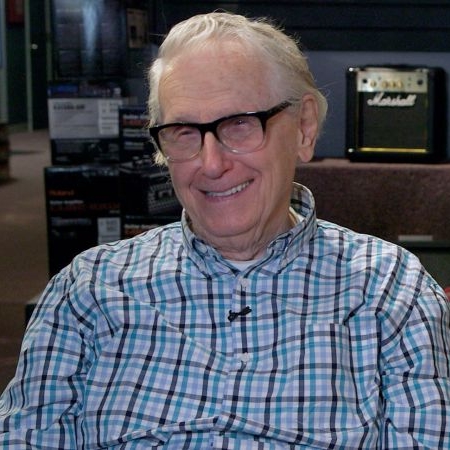
Bill Hanley. Photo courtesy of NAMM
Location: Zoom, from various locations around Seattle WA, Boston MA, and Cambridge MD
Moderated by: Greg Dixon, Dan Mortensen
Speaker(s): Bill Hanley - Hanley Engineering, John Chester - Independent Consultant
Woodstock Music and Art Fair, commonly referred to simply as Woodstock, was a music festival held August 15-18, 1969, on Max Yasgur's dairy farm in Bethel, New York, 40 miles (65 km) southwest of the town of Woodstock. Billed as "an Aquarian Exposition: 3 Days of Peace & Music" and alternatively referred to as the Woodstock Rock Festival, it attracted an audience of more than 400,000. Thirty-two acts performed outdoors despite sporadic rain.[Wikipedia]
The event was unprecedented, especially given the timeframe, nobody had attempted an event of this magnitude or scale. The promoters expected a crowd, perhaps 50,000 persons, but (of course) they had wildly underestimated what would happen. The site was wholly undeveloped, aside from what dairy cattle required: grass and dirt, there was no infrastructure of any sort.
Everything needed to be put into place: water, sanitation, first aid, staging, lights, sound, etc. This is 1969, and rock-and-roll staging was in its infancy. You couldn't just order what you needed; instead you had to design and build it. Concert sound systems could not be purchased off-the-shelf; you designed, you selected components, you built. It would be 5 years before mixing consoles remotely comparable to those found in recording studios would become part of the live sound industry. Finally, in 1974 Yamaha introduced the PM1000 mixing console. Compared to an Altec 1567A, it was an SSL (well... not quite, but the extreme comparison is apropos). Everything was being invented, in real time.
This is the story of just one part of the behind-the-scenes commotion that resulted in what is now called: Woodstock. Of all the systems that had to function during the festival, the sound system was the lynchpin. Attendees could hear clearly both the speech AND the music, and when other systems were failing (and they all did, to one degree or another), the sound system was the glue that held everything together.
At our June meeting, PNW committee member Dan Mortensen will discuss, with Bill, John, and possibly other guests who were there, the different portions of the Woodstock concert sound system, in as great a detail as can be done 53 years later. John Chester was at Woodstock, however not in an audio capacity. At that time, he was the sound chief at the Fillmore East and had gigs after Woodstock's sound load-in day, so at the festival, he worked on his friend Chris Langhart's crew (production manager) which did everything including well water distribution throughout the site, garbage pickup coordination and zillions of other things.
Thanks to John for graciously providing his work and analysis. Many of his slides, included in today's meeting, were prepared for previous presentations about Hanley and/or Woodstock.
A list of the sound system elements to be discussed and the presenter's bios can be found on the Section Website.
Other Business: Annual Section Business Meeting and Elections See here for more information: https://www.aes.org/sections/pnw/bio2022.htm
Posted: Wednesday, June 1, 2022
« Home Studio Construction & Tour | Main | Women Who Worked at Woodstock 1969... In… »
